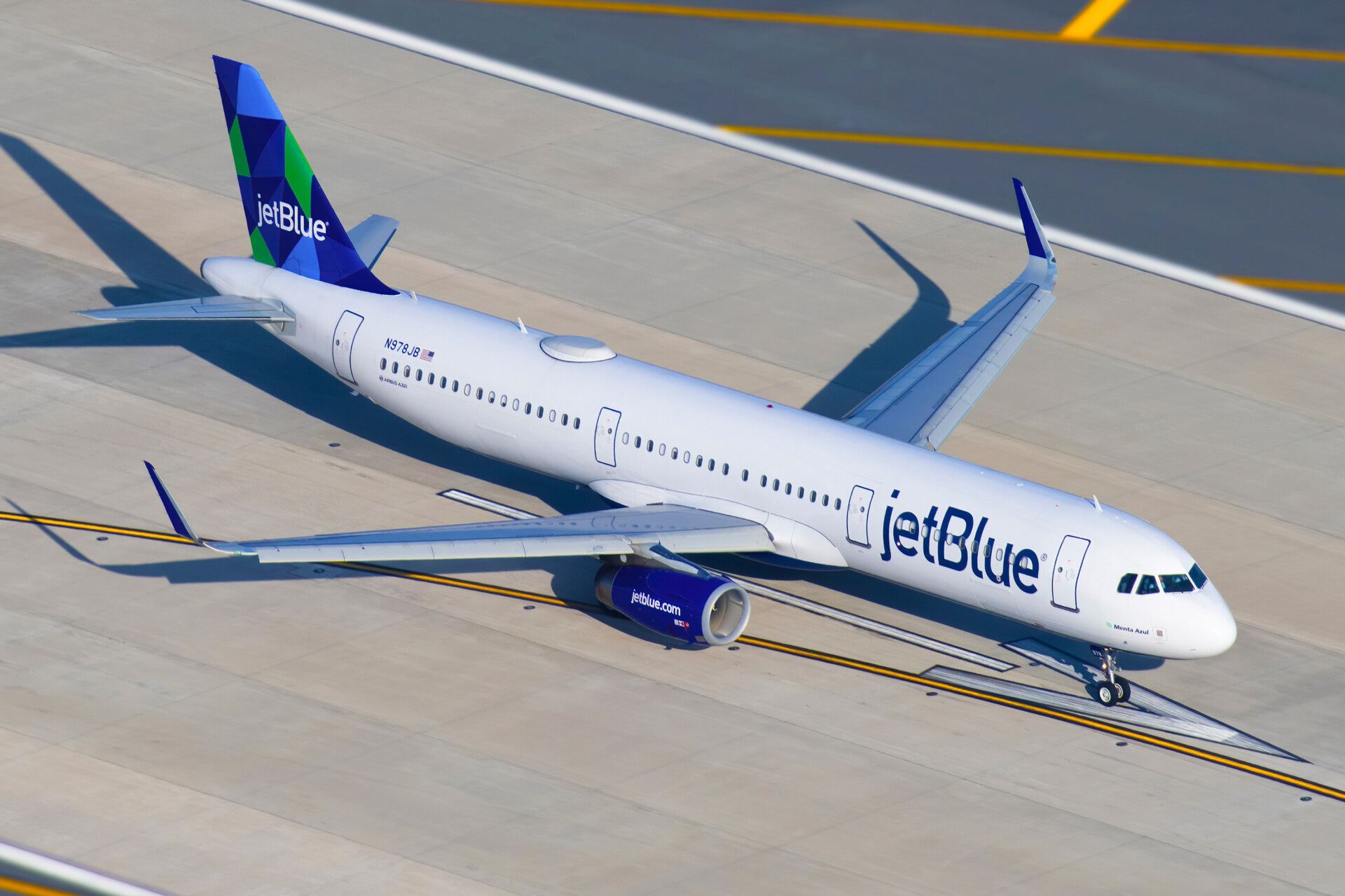JetBlue Airways Palestinian Territories - Map Talk
There was quite a stir, you know, about the maps on JetBlue flights recently. It seems, apparently, the airline let people know it was changing the moving maps you see on its planes. This was to go along with some rules for the Middle East. The reason? Well, Israel, a place on the map, was shown as "Palestinian Territories." This got some folks speaking up, and the airline shared that it just hadn't known about this before.
So, this whole thing, it really got people talking online. The airline, in a way, took action pretty quickly. It seems like a situation where a small detail, just a little, on an in-flight map, can really get a big discussion going, don't you think?
It's interesting, because JetBlue doesn't actually fly to Israel or anywhere else in that area. But they use these maps from a company, or rather, they used to get permission to use maps from a company called Geofusion. You could, actually, use your fingers on the screen to look at the whole world, not just where your flight was going.
Table of Contents
- What Sparked the Discussion Around JetBlue Airways Palestinian Territories?
- How Did JetBlue Respond to Map Concerns?
- Why Were These Maps an Issue for JetBlue Airways Palestinian Territories?
- The Vendor Behind the Views - JetBlue Airways Palestinian Territories Maps
- What About Other Policies - JetBlue Airways Palestinian Territories?
- How Does This Affect JetBlue's Reputation?
- Has JetBlue Changed Its Flight Plans to the Region?
- What Does This Mean for Companies and World Events?
What Sparked the Discussion Around JetBlue Airways Palestinian Territories?
Several people flying with JetBlue, you know, just happened to notice something on the map display. It showed "Palestinian Territories" quite clearly. Sometimes, it seemed to be there instead of Israel. And, quite literally, it appeared to stretch from the river to the sea, which is a phrase that has a lot of meaning for many people. Shmais, for example, sent in some pictures from a flight, showing exactly what was seen on the screen. This, basically, got the ball rolling for a lot of talk.
The maps, as a matter of fact, were meant to follow directions for the Middle East. But, in this case, Israel was labeled as "Palestinian." This particular way of showing things, apparently, covered the whole land of Israel with that label, according to a report from N12. So, it wasn't just a small part, but the entire area, which is pretty significant.
How Did JetBlue Respond to Map Concerns?
After people spoke up, the company, well, they took some steps. JetBlue, as it turns out, let go of the map vendor. This happened after the upset reactions about the "Palestinian Territories" label being over Israel. The airline shared that it wasn't aware of this detail beforehand, which, you know, makes sense that they would want to fix it once they knew.
It's worth remembering that JetBlue doesn't actually fly to Israel or anywhere else in that part of the world. So, the maps they use are for general viewing, not for their specific flight routes there. Still, the images on those maps, like your, can really matter to people, and that's why they made a change. They basically, switched map providers because of the whole discussion.
Why Were These Maps an Issue for JetBlue Airways Palestinian Territories?
The maps on JetBlue flights, as you can see, were showing Israel as 'Palestinian Territories.' On top of that, the Golan Heights, a specific area, was no longer inside the border on these maps. This, you know, was a big part of what people found concerning. When passengers saw this, they spoke up, and the company, essentially, had to deal with it.
The issue wasn't just a small detail. The "Palestinian Territories" label, as N12 reported, covered the entire land of Israel. This means the map presented a view of the area that, for some, was a complete change from what they expected or recognized. It's almost, like a total redraw of a known place.
The Vendor Behind the Views - JetBlue Airways Palestinian Territories Maps
JetBlue, as we talked about, got permission to use maps from a company named Geofusion. These maps were pretty interactive. You could, for instance, use your fingers to explore the whole world, not just the path of your specific flight. So, people had a chance to really look around and see these details that caused the discussion. It's interesting how a tool meant for general exploration can, in a way, cause such a specific issue.
What About Other Policies - JetBlue Airways Palestinian Territories?
It's not just the maps, really. The airline, you know, has also stopped allowing flight attendants to wear personal items that weren't approved, like pins with the Palestinian flag. This happened after a passenger was asked to leave by the police for questioning one of these pins. So, you can see, there are other situations where the airline has had to think about these kinds of matters.
The moving map, arguably, seemed to try and find a middle ground. It appeared to recognize Palestine, which the U.S. does not officially do, but it didn't only recognize Palestine. This, in some respects, made it a tricky situation for the airline, as they were trying to navigate different viewpoints through their visual displays. It's almost like walking a fine line.
How Does This Affect JetBlue's Reputation?
As you'd expect, this whole thing, you know, really got a lot of discussion going online. People shared their thoughts and feelings quite openly. The airline, basically, took steps to address the situation. When something like this happens, it definitely gets people talking about the company and what it stands for. It's a situation where, apparently, what's on a map can have a big impact on how people see a business.
Has JetBlue Changed Its Flight Plans to the Region?
There's been some talk, you know, about JetBlue Airways pausing flights to Tel Aviv. This decision, it seems, got people talking about world events and how companies should act. It's a bit of a discussion about business actions and what's considered right in these situations. The airline's position on the Palestinian territories, in a way, has caused people to feel differently about things.
What Does This Mean for Companies and World Events?
This whole situation, really, makes people think more about how world events affect what companies do. It shows how a business, even one that doesn't fly to a certain area, can find itself caught up in bigger discussions. It's a case where, honestly, what's shown on a map can lead to a deeper look at how companies make their plans and how they deal with different views.
Article Recommendations
:max_bytes(150000):strip_icc()/exterior-plane-JETBLUE0721-2b125272299f4e96964a4e4a55b0bda1.jpg)


Detail Author:
- Name : Mr. Rico Brown III
- Username : cristobal73
- Email : bernier.mara@gmail.com
- Birthdate : 1979-04-30
- Address : 6798 Lawson Harbors Raphaellehaven, NY 21725
- Phone : +17086006647
- Company : Baumbach Ltd
- Job : Rental Clerk
- Bio : Corporis et doloremque rerum omnis consequatur. Et excepturi unde qui eum aut. Veritatis totam corrupti voluptatibus sunt enim.
Socials
facebook:
- url : https://facebook.com/waino9555
- username : waino9555
- bio : Ducimus ut fugiat quia harum voluptatem magni enim.
- followers : 2826
- following : 427
linkedin:
- url : https://linkedin.com/in/kovacek2006
- username : kovacek2006
- bio : Maxime et reprehenderit dolores ut eos.
- followers : 593
- following : 371
tiktok:
- url : https://tiktok.com/@wainokovacek
- username : wainokovacek
- bio : Voluptatem molestiae consequatur repellendus neque aut cumque enim.
- followers : 1057
- following : 2127
twitter:
- url : https://twitter.com/waino7143
- username : waino7143
- bio : Quidem fuga inventore adipisci quam ratione. Eos alias esse voluptas ullam. Recusandae voluptatem quo cum.
- followers : 4421
- following : 2249
instagram:
- url : https://instagram.com/waino.kovacek
- username : waino.kovacek
- bio : Inventore aperiam illum omnis possimus. Nemo et consequuntur et dolore. Quia fugit et vel itaque.
- followers : 4922
- following : 2650